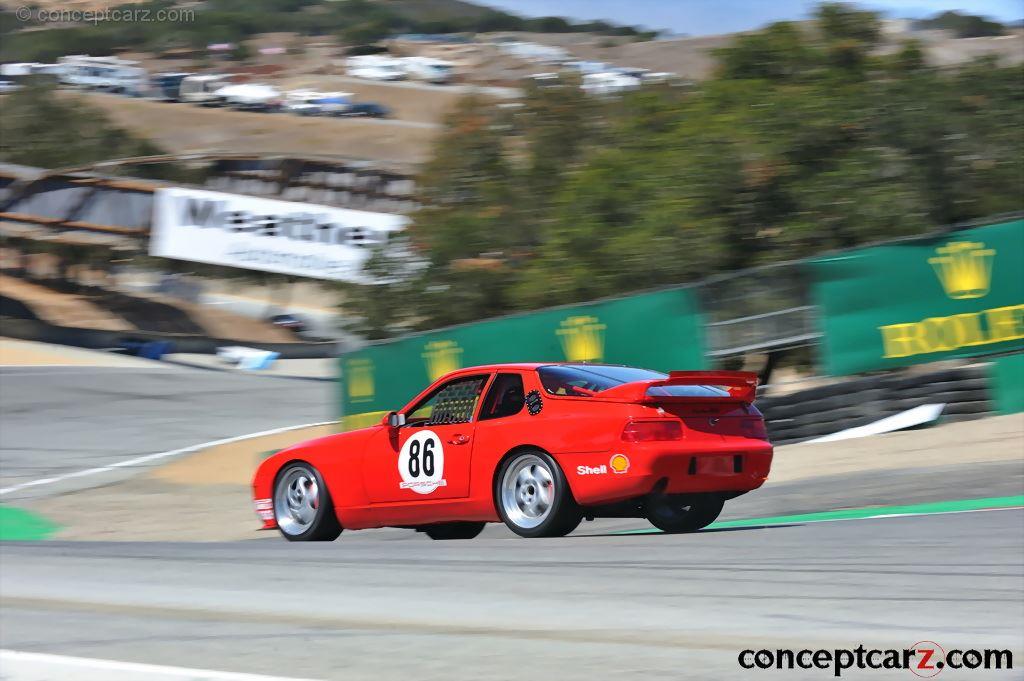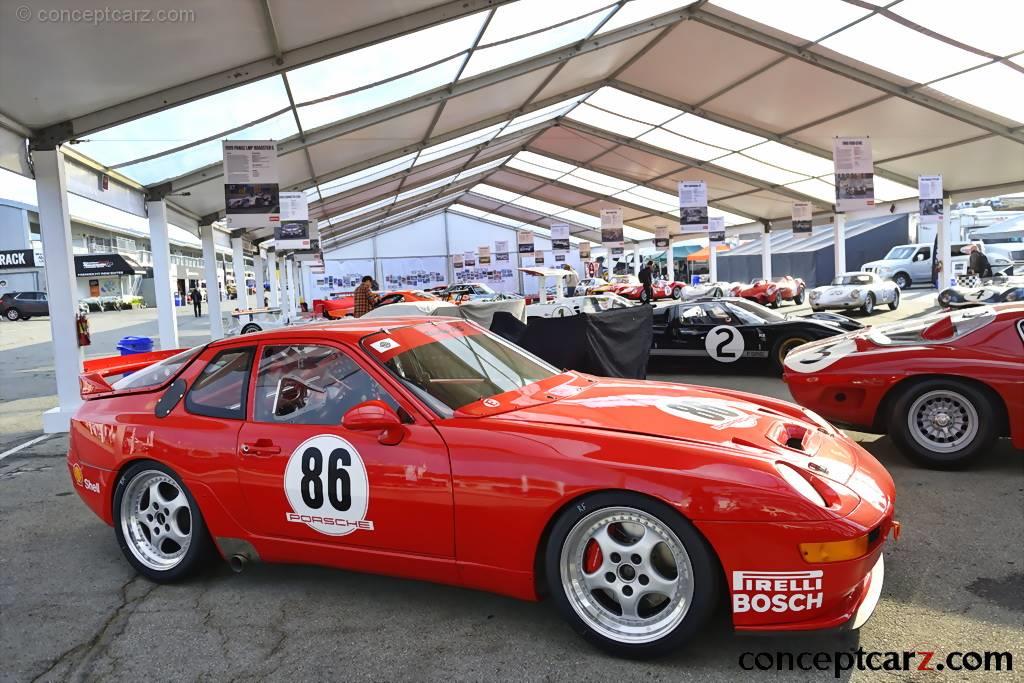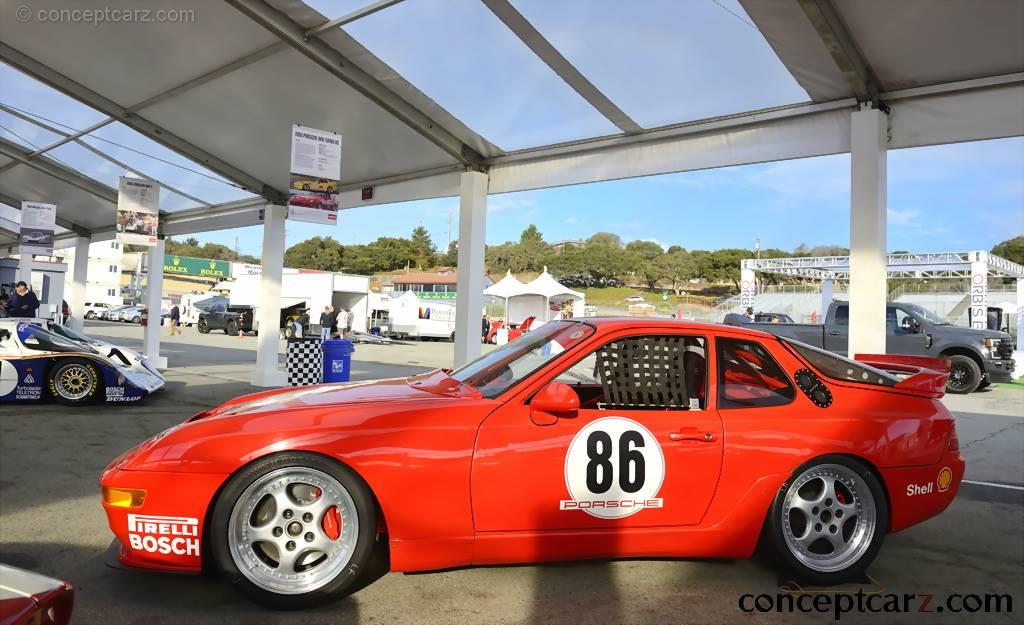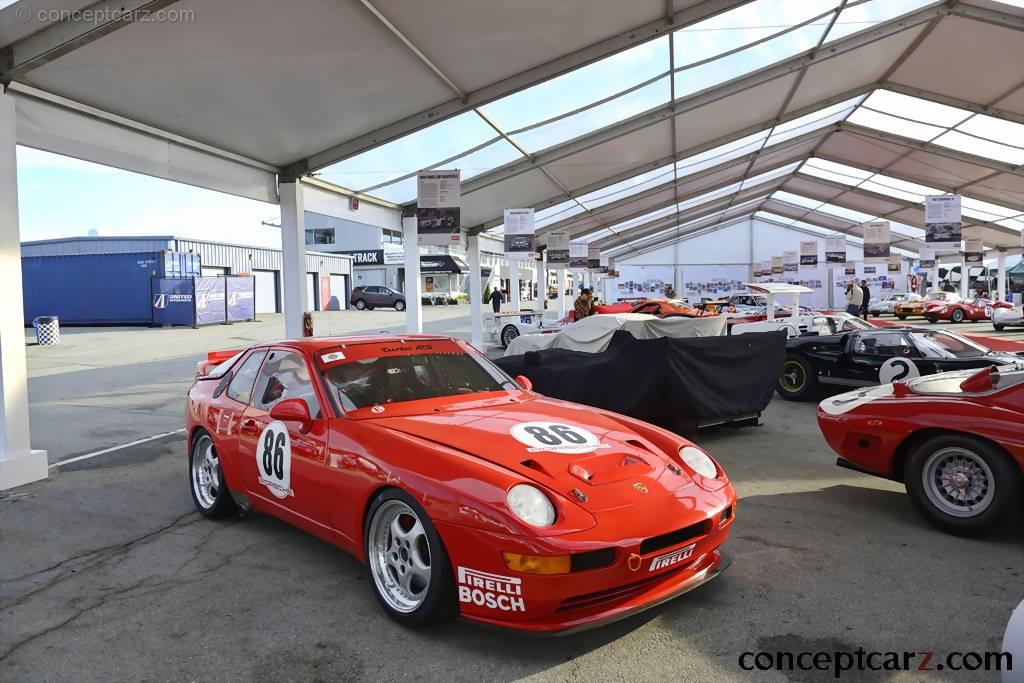The first of the Porsche family's front-engined sports cars was the 924 of November 1975 and drew heavily on Volkswagen and Audi components. Its 2.0-liter, four-cylinder, overhead-camshaft engine was a development of the Audi 100's and Volkswagen's spare parts bin was scoured for a four-speed transaxle transmission. The 944 model followed six years later and was constructed along similar lines to its 924 progenitor. The wider bodywork concealed a 2.5-liter, overhead-camshaft 'four' (essentially half of the 928's V8 bored out and given twin balancer shafts to minimize the vibration). The engine was paired with a five-speed rear transaxle and the 924-type running gear was modified to cope with the 944's enhanced performance. 
Coupe
Chassis #: 1
View info and historyThe Porsche 924 was produced through 1988; the four-cylinder 944 from 1982 to 1991; and the V8-powered 928 from 1977 to 1995. The Porsche 968, produced from 1991 through 1995, was styled along the 928 lines and retained its 944 predecessor's basic mechanical layout. Its specification was enhanced via a 2,990cc engine paired with a six-speed manual transmission. It had a 104mm bore, an 88mm stroke, a compression ratio of 11.0:1, and a lighter crankcase, crankshaft, and pistons. With 'Variocam' variable valve timing, updated engine management electronics, and a dual-mass flywheel, the engine delivered 240 horsepower and endowed the 968 with a zero-to-sixty mph time of 6.2 seconds and a top speed of 156 mph. Porsche's dual-model four-speed Tiptronic automatic transmission was optional equipment. The styling by Harm Lagaay had a familiar family resemblance to the top-of-the-line 928, including its integrated front bumper and exposed pop-up headlamps. The rear of the car received more extensive styling updates with fully coloured rounded taillamps, PORSCHE badging was fitted between the taillights, and the rear apron was integrated into the rear bumper. The Porsche 968 CS (Club Sport) and Turbo S
Coupe
Chassis #: 1
View info and history968 CS
The Porsche 968 CS was a lightweight version of the 968 designed for an improved track experience. Many of the luxury amenities were removed, along with the sound-deadening material, rear wiper, vanity covers in the engine bay, and the power windows were replaced with crank-driven units. There were manually adjustable lightweight Recaro racing seats and a three-spoke sports steering wheel with no airbag. The sunroof and A/C system were optional. There were no rear seats.Mechanical improvements included a revised suspension system lowered by 20 mm, and wider wheels and tires installed. The 16-inch wheels were wrapped with 225 at the front and 255 tires at the rear. 968 Turbo S
Coupe
Chassis #: 1
View info and historyPorsche Motorsports at Weissach produced a turbocharged 968 Turbo S in exclusive quantities (14 in total) using the same body and interior as the Club Sport. The 968 Turbo S was distinguished by its adjustable rear wing, three-piece speedline wheels, deeper front spoiler, and NACA bonnet (hood) scoops. It weighed 45 lbs (20 kg) less than the standard 968 and its suspension was lowered by 17.8mm (0.7 inches). The largest improvement was underneath the hood - its 3.0-liter engine (type number M44/60) with a 944S2 style engine block and an 8-valve SOHC cylinder head from the 944 Turbo S. With 305 horsepower (227 kW) at 5,600 RPM and 369 lb-ft of torque at 3,000 RPM, the 968 Turbo S was capable of sprinting from zero-to-sixty mph in 4.7 seconds. The six-speed transaxle received a longer final drive and gear ratios, along with a 75% locking limited-slip differential.The ride height was lowered, stiffer springs and revised damper settings were applied to the suspension, and stopping power was by four-piston brakes.The Porsche 968 Turbo RS
Coupe
Chassis #: 1
View info and historyThe Porsche 968 Turbo RS was a higher specification, more potent, and lighter version of the Turbo S. Built by Porsche Motorsports Research and Development, the 968 Turbo RS was built between 1992 and 1994. Two variations were offered including one built to the German ADAC GT specification, weighed 1,350 kg, and equipped with the K27 turbocharger from the Turbo S and offering 337 horsepower. The international specification version weighed 1,212 kg and used a KKK L41 turbocharger and produced 350 horsepower. Both variants received a modified six-speed manual transmission with a racing clutch and altered gear ratios. To cope with the demands of motorsports, the suspension was appropriately modified. The minimalistic interior included a roll cage and a single racing bucket seat with six-point harness.Four examples of the Porsche 968 Turbo RS were built. Accolades include a fourth-place finish in the Avus race in 1993 by the Joest team with driver Manuel Reuter. In BPR competition, a sixth place finish was achieved at the 4-hour race by Dijon in 1994. The Seikel Motorsport team used a 968 Turbo RS at the 1994 24 Hours of Le Mans, driven by John Nielsen, Thomas Bscher and Lindsay Owen-Jones. After 84 laps, it was forced to retire due to an accident.
by Daniel Vaughan | Jan 2023

Coupe
Chassis #: 1
View info and history

Coupe
Chassis #: 1
View info and history
The Porsche 968 CS was a lightweight version of the 968 designed for an improved track experience. Many of the luxury amenities were removed, along with the sound-deadening material, rear wiper, vanity covers in the engine bay, and the power windows were replaced with crank-driven units. There were manually adjustable lightweight Recaro racing seats and a three-spoke sports steering wheel with no airbag. The sunroof and A/C system were optional. There were no rear seats.Mechanical improvements included a revised suspension system lowered by 20 mm, and wider wheels and tires installed. The 16-inch wheels were wrapped with 225 at the front and 255 tires at the rear. 968 Turbo S

Coupe
Chassis #: 1
View info and history

Coupe
Chassis #: 1
View info and history
by Daniel Vaughan | Jan 2023
Related Reading : Porsche 968 History
Influenced by declining sales in 1992, Porsche introduced a new more unified-looking model with enhanced technological updates. Imperative to the survival of Porsche as an independent automaker, this new design was what the market needed. Jumpstarting the ‘new Porsche look, the 968 borrowed many styling cues from the 928, along with the popular curves of the 911s. Boosting this normally aspirated....
Continue Reading >>
Continue Reading >>
1992 Porsche 968 Turbo RS Vehicle Profiles
Recent Vehicle Additions
Related Automotive News

All-New Ford Mustang Upshifts its Style, Performance and Digital Immersion for the Ultimate Pony Car Experience
All-new Mustang coupe and convertible deliver aspirational styling combined with a revolutionary digital experience, plus greater performance with enhanced track capability
Immersive digital cockpit is driver-focused with customisable dual-display...

The Purist's Dream: 2019 Toyota 86 Blends Sports Car Fundamentals With 21St Century Performance, Comfort And Tech
New-for-2019 86 TRD Special Edition Joins Lineup as Ultimate Performance 86 with Brembo Brakes, SACHS dampers, TRD Body Kit, Michelin Pilot Sport 4 Tires, Unique Design Details, TRD Exhaust
Available with Heated Power Outside Mirrors, Keyless Ent...

NEW 911 RSR AND 911 GT3 R TEST FOR 24-HOUR CLASSIC
IMSA WeatherTech SportsCar Championship, The Roar Before the Rolex 24, DaytonaUSA – day 1
Stuttgart. With The Roar Before the Rolex 24 at the Daytona International Speedway, the countdown to the 24 Hours of Daytona has begun. The traditional...

NEW VOLKSWAGEN GOLF R MAKES ITS U.S. DEBUT AT THE 2014 NORTH AMERICAN INTERNATIONAL AUTO SHOW
Most powerful production Golf ever for the North American market
New car has an estimated 290 horsepower, but is more fuel efficient than previous Golf R
EA888 TSI® 2.0-liter engine propels DSG® equipped Golf R from 0 to 62 mph in 4.9 seconds
...

NEW VOLKSWAGEN GOLF R MAKES ITS U.S. DEBUT AT THE 2014 NORTH AMERICAN INTERNATIONAL AUTO SHOW
Most powerful production Golf ever for the North American market
New car has an estimated 290 horsepower, but is more fuel efficient than previous Golf R
EA888 TSI® 2.0-liter engine propels DSG® equipped Golf R from 0 to 62 mph in 4.9 seconds
Car...



















